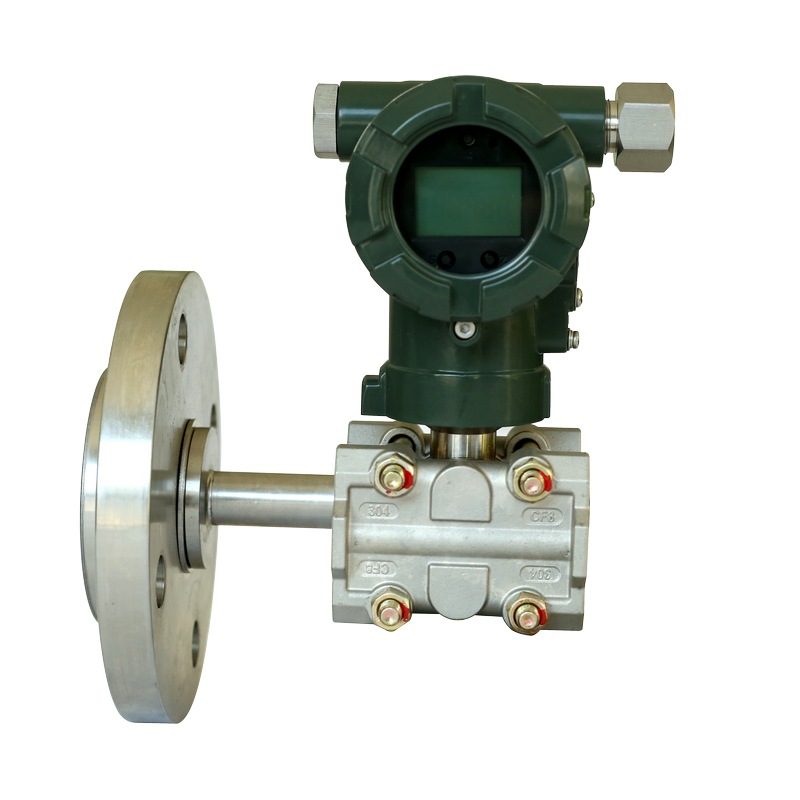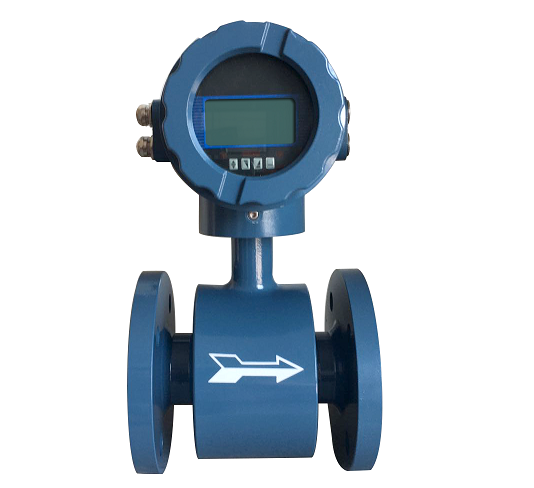BETTER TOUCH BETTER BUSINESS
Contact Sales at KAIDI.
In float gauge liquid level measurement, the commonly used type of level transmitter is divided into single-flange level transmitter and double-flange level transmitter, so what is the difference between the two?

1. Single flange refers to the positive pressure side of the transmitter is a flange structure, directly connected to the interface with the measurement medium, while the negative pressure side is the use of the pressure pipe will be connected to the measurement medium and the transmitter chamber. Advantage is that the measurement accuracy is high, can achieve the measurement of the transmitter technical indicators, the disadvantage is that the negative pressure pipe must be sealed, and need to migrate the range of the transmitter, calibration should be negative pressure pipeline within the media liquid error migration off.
2. Double flange refers to the positive and negative pressure side of the transmitter are flange structure, can be directly connected with the container to be measured, pipeline. Advantage is easy to install, convenient calibration, without range migration. The disadvantage is that the measurement accuracy is not high, due to the flange and transmitter used between the elastic hose connection, the interior should be full of silicone oil, so the medium pressure changes in the transmission of a certain deviation, the external temperature change more or less on the silicone oil has some impact, so the measurement reflects on a certain error.
Single-flange level gauge and double-flange level gauge are hydrostatic measurement of the flange level transmitter, so what occasions can use single-flange, which occasions can use double-flange?
Monoflange liquid level gauge measurement is open container level, monoflange liquid level transmitter has advanced design principle, complete varieties of specifications, easy to install and use and so on.
Double flange liquid level meter measures the liquid level of closed container; double flange liquid level transmitter is combined by differential pressure transmitter and intelligent amplifier board, which can constitute intelligent remote pressure and differential pressure transmitter, and cooperate with hand manipulator in accordance with HART protocol, which can communicate with each other for setting and monitoring.

Level transmitter is a simple and reliable measuring instrument to measure the level of liquid in the tank, is the use of the principle of P = ρgh to measure the differential pressure to measure the level of liquid, the level of liquid and the flange type level transmitter is measured by the differential pressure is proportional to the level transmitter, the process of the liquid level transmitter is usually connected by a diaphragm flange, the diaphragm is filled with silicone oil as a pressure transmitting medium. Liquid tanks usually have open tanks and tanks with pressure points, open tanks on the upper part of the atmosphere, measuring the level of open tanks level transmitter only need to connect the high-pressure end of the process flange, the low-pressure side of the connection with the atmosphere. And with pressure tanks need level transmitter high and low pressure side connected to the diaphragm flange type, in order to measure the high and low pressure side of the pressure difference.

Single-flange liquid level gauge applicable occasions
1、Viscous medium at high temperature;
2, easy to crystallise the medium;
3, with solid particles or suspended sedimentary media;
4, strong corrosive or highly toxic media;
5, can eliminate the leakage of the pressure conduit pollution of the surrounding environment occurs; can eliminate the use of isolation fluid, due to the instability of the measurement signal, the need for frequent replenishment of the isolation fluid of the cumbersome work;
6、Continuous and accurate measurement of interface and density;
7, the remote transmission device can avoid the cross-mixing of different instantaneous media, so that the measurement results truly reflect the actual situation of the process changes;
8, hygiene and cleanliness requirements are very high occasions;
9, such as food, beverage and pharmaceutical industrial production, not only requires the transmitter contact media parts in line with health standards, and should be easy to flush to prevent cross-contamination of different batches of media.
We are here to help you! If you close the chatbox, you will automatically receive a response from us via email. Please be sure to leave your contact details so that we can better assist